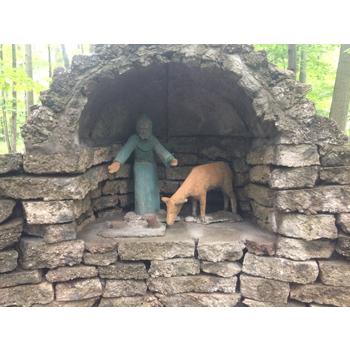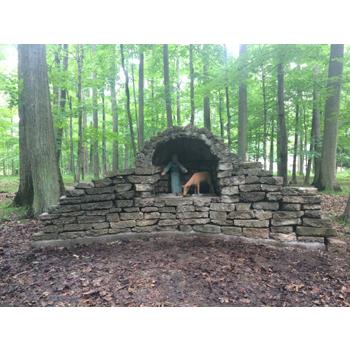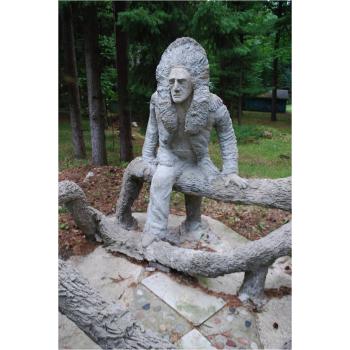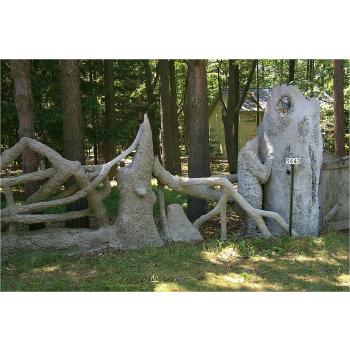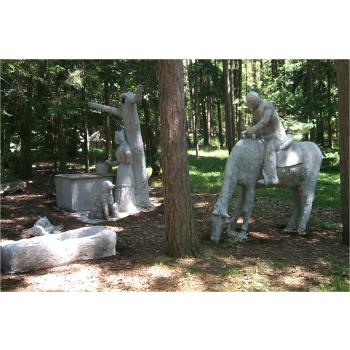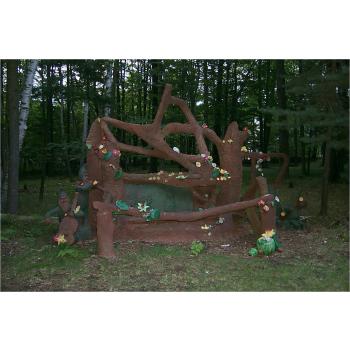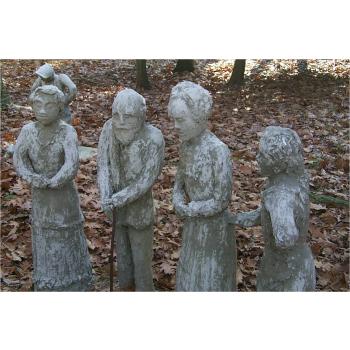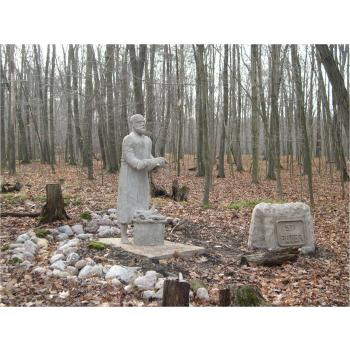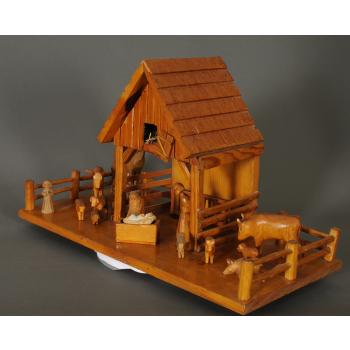Tellen Woodland Sculpture Garden
Beginning in 1942 and continuing until his death in 1957, James A. Tellen created over 30 historic, religious and mythic figures within the woods surrounding his family's summer cottage in the Black River area of Sheboygan, Wisconsin. An assembly of both life-size and miniature characters, the sculptures are arranged in lifelike tableaux, using the natural environment as a kind of ready-made stage set, with the actors turned to stone. Collectively, they take on a magical, almost surrealistic relationship with their natural surroundings -- and provide a window to the artist's soul.
It is believed that Tellen was born in 1880 in the town of Houghton in Michigan's Upper Peninsula. Adopted early on, Tellen moved to the small city of Sheboygan, Wisconsin, with his new family. He attended parochial school in Sheboygan until the eighth grade and later attributed his strong religious beliefs to his Catholic upbringing.
For most of his life, Tellen worked in a furniture factory where he painted stripes, curlicues and other fine decorative detailing. In his spare time, he experimented with oil painting, then turned to other mediums. When slowdowns at the factory during and following the Depression reduced Tellen's work schedule, it allowed him to pursue his woodcarving hobby and attend six years of industrial art classes at a local night school. Tellen's family summer cottage served as a showcase for his wood and metal pieces.
At age 62, while hospitalized and recovering from an illness, Tellen cast concrete statues displayed in a churchyard across the street inspired him. During the following winter months, Tellen began major figures by making a clay model, a plaster mold, and a concrete casting of the head. In summers at the site, he mounted the heads on metal armatures with wire mesh skeletons and completed the bodies with dishpan loads of cement.
According to most reports, Tellen's first major work in concrete began with "Fallen Log," his 65-foot-long trompe l'oeil masterpiece of weathered logs, an immense bear, two clambering bear cubs, and the dramatic figures of a Native American man, woman and child.
These first sculptures -- like most of Tellen's work -- are distinguished by their surprising degree of realism. Strongly influenced by the popular notion that representation skill is the true sign of artistic ability, Tellen was obsessed with creating a faithful portrait of his subjects. Struggling in particular with the difficulties of anatomy, he worked and reworked the features of many of his major figures until they finally met his exacting standards for realism. Because he reportedly could not bring himself to destroy any of his own works, Tellen often buried the remnants of his many early attempts in his yard, enjoying the idea that, at some time in the future, his eerie collection of cement heads might be unexpectedly unearthed.
Tellen passed away in 1957, leaving behind a forest environment described as "one of the finest exhibits of outdoor art in the state."
Fully conserved by Kohler Foundation, the site includes Tellen's original log home and "brat fryer" building along with a refurbished Boy Scout house now used for artists-in-residence programs and workshops. The environment was gifted to the John Michael Kohler Arts Center in 2000.
A nativity set created by James Tellen had been held in his family until 2020 when the artist’s granddaughter generously donated it to Kohler Foundation. Conservator Meghan Mackey replaced broken elements before it was gifted to JMKAC.
For additional information, please contact the John Michael Kohler Arts Center at 920-458-6144 or visit their website at www.JMKAC.org.
The Wisconsin Art Environment Consortium created the video podcast below about the Tellen Woodland Sculpture Garden:
James Tellen Woodland Sculpture Garden
